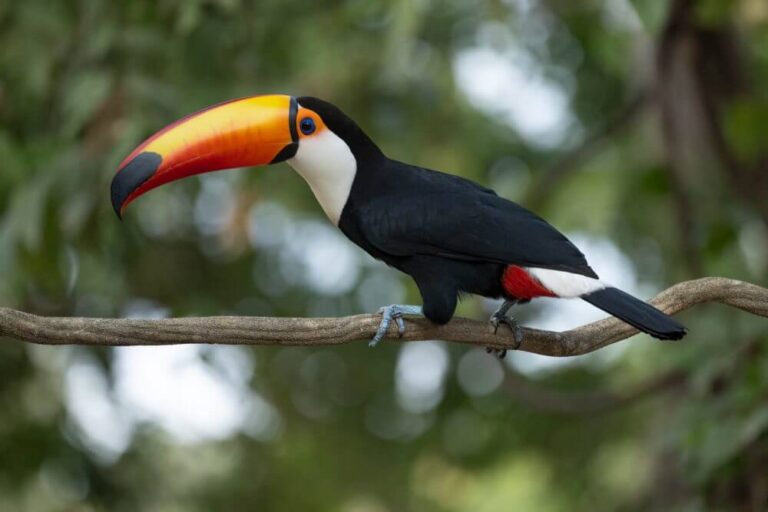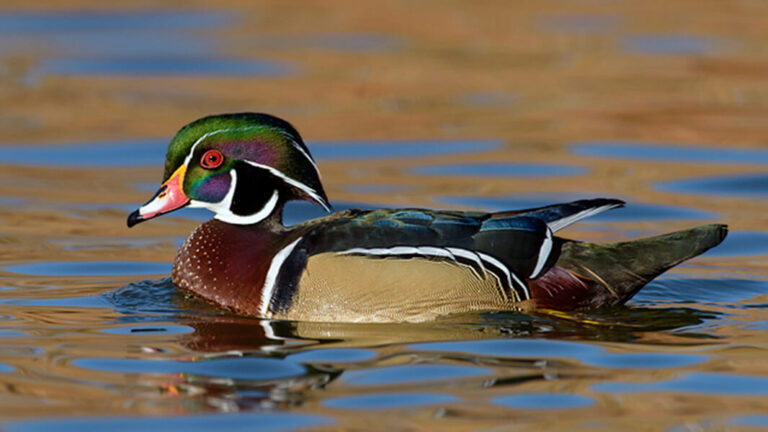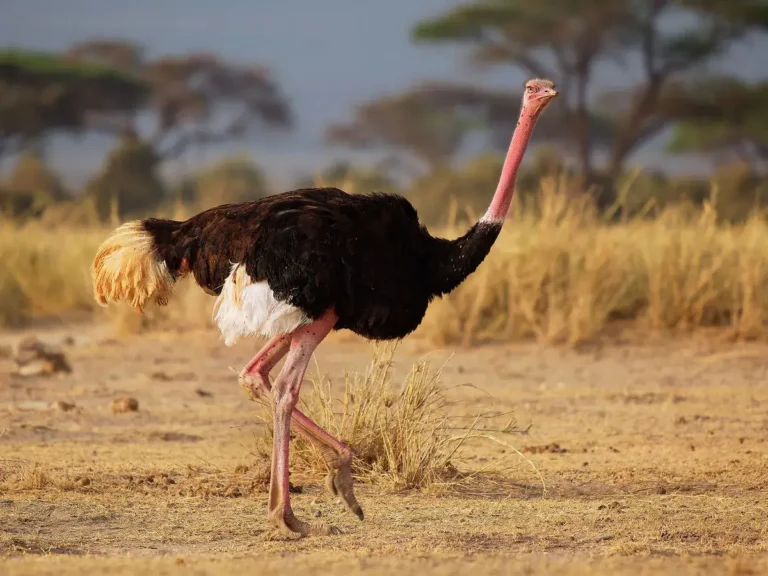Tui Bird: A Comprehensive Guide to New Zealand’s Iconic Songbird
The tui bird (Prosthemadera novaeseelandiae) is one of New Zealand’s most fascinating and unique avian species. With its striking plumage, melodious song, and important role in pollination, the tui has captured the hearts of New Zealanders and bird enthusiasts worldwide. Known for its intelligence and adaptability, the tui is not only a vital part of New Zealand’s ecosystem but also a cultural symbol in Maori tradition.
Contents
Scientific Classification
- Kingdom: Animalia
- Phylum: Chordata
- Class: Aves
- Order: Passeriformes
- Family: Meliphagidae
- Genus: Prosthemadera
- Species: Prosthemadera novaeseelandiae
Physical Characteristics
The tui is easily recognized by its iridescent blue-green plumage and the distinctive white tuft of feathers at its throat, known as the “poi.” This striking contrast gives the tui an elegant appearance, making it stand out among other birds.
- Size: The tui measures about 27–32 cm (11–12.5 inches) in length, with males slightly larger than females.
- Weight: Adult birds typically weigh between 90 and 120 grams.
- Coloration: In addition to its dark, glossy feathers, the tui has a metallic sheen that reflects shades of green, blue, and purple. Its wings and tail feathers are fringed with white.
- Bill and Legs: The tui has a long, curved bill and strong legs, which help it forage for nectar and insects in trees and bushes.
Habitat
Tui birds are native to New Zealand and are found across the country, from coastal regions to mountainous forests. They thrive in a variety of habitats, including:
- Native forests: Tuis are commonly seen in dense forests, particularly where flowering trees and plants are abundant.
- Urban areas: Adaptable and intelligent, tui have become increasingly common in suburban gardens and parks where native plants are cultivated.
- Offshore islands: Many predator-free islands have tui populations that are free from the pressures of invasive species.
Behavior
Tuis are known for their bold and sometimes aggressive behavior. They are territorial, particularly when food sources such as nectar-producing plants are abundant. Males will aggressively defend their feeding areas from other tui and even other bird species.
- Flight: Tui birds are strong fliers and are often seen darting through forests with remarkable speed and agility. Their flight is erratic, with quick changes in direction and rapid wingbeats.
- Vocalizations: One of the tui’s most remarkable traits is its complex vocal range. Tuis are accomplished mimics capable of reproducing a wide variety of sounds, including the calls of other birds, human speech, and mechanical noises. Their song consists of rich, melodic notes, clicks, grunts, and whistles.
Diet
Tui birds are omnivorous, with a diet that mainly consists of nectar from native flowering plants, but they also consume insects, fruit, and pollen. Their long, brush-tipped tongue is specially adapted to extract nectar from flowers, making them important pollinators for many of New Zealand’s native plants.
- Favorite plants: Tuis are particularly fond of the flowers of the pohutukawa, kowhai, and flax plants.
- Insects: During the breeding season, tui will supplement their diet with insects to provide extra protein for themselves and their chicks.
- Fruits: When nectar is scarce, tui turns to fruits and berries, which they consume from native and introduced plants alike.
Reproduction
Tui birds are monogamous and form pairs during the breeding season, which typically runs from September to February. They build their nests high in trees, using twigs, grass, and leaves.
- Eggs: The female lays 2-4 eggs, which are pale pink with dark spots.
- Incubation: The female incubates the eggs for about 14 days while the male provides food and guards the territory.
- Chick development: Once hatched, both parents feed the chicks a diet of insects and fruit. The chicks fledge after about 20 days, though they remain dependent on their parents for several more weeks.
Predators and Threats
While adult tui have few natural predators, their eggs and chicks are vulnerable to introduced species such as rats, stoats, and possums. These predators pose a significant threat to tui populations, particularly in regions where predator control is not in place.
- Habitat loss: Deforestation and the conversion of land for agriculture have also impacted tui populations by reducing their natural habitat.
- Conservation efforts: Thanks to extensive conservation programs, including predator control and reforestation efforts, tui populations have rebounded in many areas.
Conservation Status
The tui is classified as “Least Concern” by the International Union for Conservation of Nature (IUCN), meaning it is not currently at risk of extinction. However, localized threats from habitat destruction and predation mean that ongoing conservation efforts are vital for maintaining healthy populations.
Interesting Facts
- Mimicry: Tuis are known for their ability to imitate other birds and even humans. They can reproduce sounds with such accuracy that they’ve been kept as pets by early Maori settlers, who appreciated their vocal talents.
- Cultural significance: In Maori culture, the tui is considered a sacred bird associated with wisdom and communication. Its feathers were used in traditional clothing, and its song is often referenced in Maori legends.
- Pollinators: Tuis play a critical role in the pollination of native plants. Their feeding habits help ensure the reproduction of many species of trees and shrubs, which are essential to New Zealand’s biodiversity.
Evolutionary History
The tui is part of the honeyeater family (Meliphagidae), which also includes species like the bellbird. It is believed that tui evolved in isolation in New Zealand, adapting to fill an important ecological niche as a nectar feeder and pollinator. Their closest relatives can be found in Australia and the Pacific islands, though the tui has developed unique traits suited to New Zealand’s diverse environments.
Relationship with Humans
Tuis have adapted well to human-altered landscapes, particularly in urban areas where native plants are commonly cultivated in gardens and parks. They are often welcomed by residents, who enjoy their lively presence and melodious calls. Tuis also benefits from conservation programs that include the restoration of native plant species, ensuring a stable food supply.
Conclusion
The tui bird is a true treasure of New Zealand, admired for its beauty, intelligence, and rich song. As an important pollinator and a key player in New Zealand’s ecosystems, the tui’s survival is crucial for maintaining the health of native forests. Through ongoing conservation efforts and a deepening appreciation for its cultural significance, the tui continues to thrive, offering New Zealanders and visitors alike a glimpse into the natural wonders of this unique land.
- Golden Retriever Pros and Cons: What Every Pet Parent Should Know - 15 September 2025
- Cane Corso Dog Breed: Health, Care, and Lifespan - 14 September 2025
- Catahoula Leopard Dogs: Description, Temperament, Lifespan, & Facts - 21 July 2025







